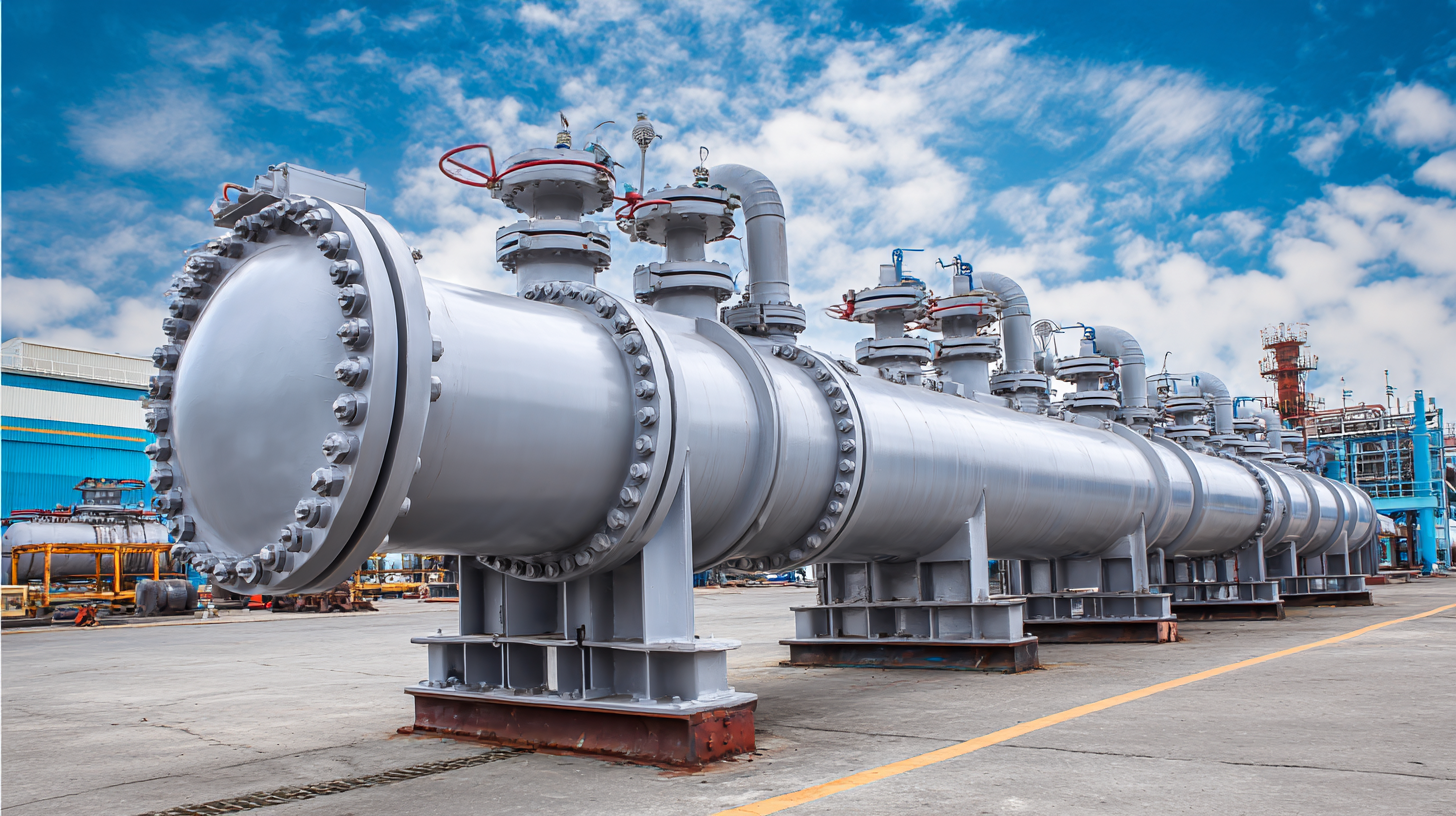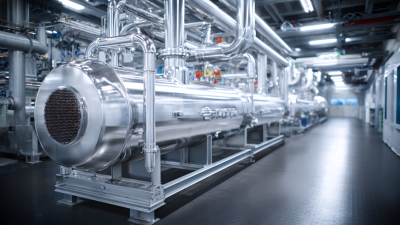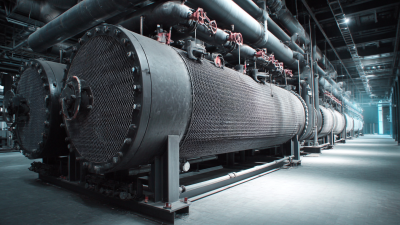Leave Your Message
When it comes to optimizing energy efficiency and maintaining optimal performance in industrial processes, selecting the right heat exchanger is crucial. Heat exchangers play a vital role in various applications, from HVAC systems to chemical processing, making the decision of which type to choose a significant one. With numerous designs, materials, and operating conditions to consider, navigating the selection process can be daunting. This article aims to provide you with essential tips to ensure you make an informed decision tailored to your specific needs. By understanding the key factors involved in choosing a heat exchanger, you can enhance system performance, reduce operational costs, and extend equipment lifespan. Whether you're replacing an existing unit or designing a new system, these insights will help you identify the best heat exchanger for your requirements, ultimately leading to greater efficiency and reliability in your operations.

Heat exchangers play a crucial role in various industries by transferring heat between two or more fluids. Understanding the different types available can significantly impact your selection process. The most common types are shell and tube, plate, air-cooled, and double-pipe heat exchangers. Each type has its own unique advantages and is suited for specific applications. For instance, shell and tube exchangers are ideal for high-pressure applications, while plate heat exchangers are known for their efficiency and compact design.
When choosing the right heat exchanger, consider the following tips: First, assess the fluids involved—knowing their temperatures, pressures, and flow rates is essential. This information will help you determine the appropriate material and design that can handle the specific conditions. Additionally, evaluate the space available for installation. Compact units like plate heat exchangers can be advantageous in tight spaces. Lastly, do not overlook the importance of maintenance; selecting an easy-to-clean model can save you time and reduce downtime in the long run.
In summary, understanding the distinct types of heat exchangers and their suitable applications is the foundation of making a well-informed choice tailored to your unique requirements.

When selecting a heat exchanger, evaluating key performance metrics is crucial to ensure it aligns with your specific application requirements. One of the primary metrics to consider is the heat transfer efficiency, which indicates how effectively the heat exchanger transfers thermal energy between fluids. This efficiency is influenced by the design of the heat exchanger, the temperature difference between the incoming fluids, and the flow arrangement, which can be counterflow, parallel flow, or crossflow. Understanding these factors will help you select a heat exchanger that maximizes heat transfer while minimizing energy consumption.
Another essential performance metric is pressure drop, which refers to the loss of pressure as fluids pass through the heat exchanger. A high-pressure drop can lead to increased pumping costs and decreased system efficiency. It's vital to balance the heat transfer requirements with acceptable pressure losses to ensure optimal system performance. Additionally, consider the material compatibility and maintenance needs, as these aspects can significantly affect the longevity and reliability of your heat exchanger, directly impacting your operational costs and efficiency over time.
| Metric | Importance | Ideal Range | Common Applications |
|---|---|---|---|
| Heat Transfer Efficiency | Critical for performance | 75% - 90% | Chemical processing |
| Pressure Drop | Affects pump efficiency | < 2 psi | HVAC systems |
| Material Compatibility | Prevents corrosion | Stainless steel, copper | Food processing |
| Size and Footprint | Fits in available space | Compact units preferred | Mobile stations |
| Maintenance Requirements | Affects long-term costs | Annual checks recommended | Power generation |
| Flow Configuration | Defines efficiency | Counterflow preferred | Oil refining |
| Cost | Budget constraints | $500 - $5000 | Industrial applications |
When selecting a heat exchanger, assessing compatibility with fluids and operating conditions is crucial for optimal performance and longevity. According to the International Energy Agency (IEA), heat exchangers account for approximately 25% of industrial energy consumption. Therefore, ensuring that the selected heat exchanger can handle the specific properties of the fluids involved—such as temperature, pressure, and corrosiveness—is vital. For example, a study by the Brazillian Institute of Oil, Gas, and Biofuels indicates that using heat exchangers made from corrosion-resistant materials can reduce maintenance costs by up to 30% over the lifecycle of the unit.
Additionally, operating conditions like flow rates and thermal loads significantly influence the efficiency of heat exchangers. The American Society of Mechanical Engineers (ASME) recommends thorough analysis of expected operational parameters. The choice between counterflow and parallel flow configurations can also depend on compatibility with fluid properties: counterflow designs typically provide better thermal performance, especially for fluids with large temperature differentials. This tailored approach not only enhances energy efficiency but also prolongs the equipment's lifespan, ultimately leading to lower operational costs and greater sustainability in industrial processes.
When selecting the right heat exchanger, evaluating cost-effectiveness and energy efficiency is paramount. Start by analyzing the initial investment against anticipated operational costs. Higher efficiency models may cost more upfront but can lead to substantial savings over time, primarily through reduced energy consumption. Determine the payback period to understand when the investment will begin to yield a return.

Next, consider the system’s overall thermal performance. This involves examining the heat transfer rates and the potential for pressure drops that could impact operational efficiency. A heat exchanger that operates efficiently under varying load conditions can enhance energy savings and prolong the system's lifespan. Additionally, account for maintenance requirements and potential downtime; efficient designs often translate to lower maintenance costs and fewer operational interruptions, further improving long-term cost-effectiveness.
When selecting a heat exchanger, one of the most critical considerations is the maintenance and space requirements for optimal performance. A well-designed heat exchanger should not only meet your thermal transfer needs but also integrate seamlessly into your existing system while allowing for easy access for maintenance. This is essential because regular cleaning and inspections are necessary to ensure efficiency and longevity.
Tip 1: Evaluate the location of your heat exchanger and ensure there is sufficient space for maintenance activities. This includes access for cleaning, inspections, and any potential repairs. A compact design might be tempting, but sacrificing accessibility can lead to prolonged downtime and costly repairs.
Tip 2: Choose materials that are not only suitable for the fluids involved but also resistant to corrosion and fouling. This minimizes maintenance frequency and enhances reliability.
Additionally, understanding your facility's layout can help you select a unit that optimizes space utilization without compromising on performance. Investing time into assessing these factors can dramatically reduce operational interruptions and ensure your heat exchanger operates at peak efficiency.
This chart illustrates the relationship between the efficiency of heat exchangers and their maintenance frequency. As maintenance intervals increase, efficiency typically declines, emphasizing the importance of regular upkeep for optimal performance.






